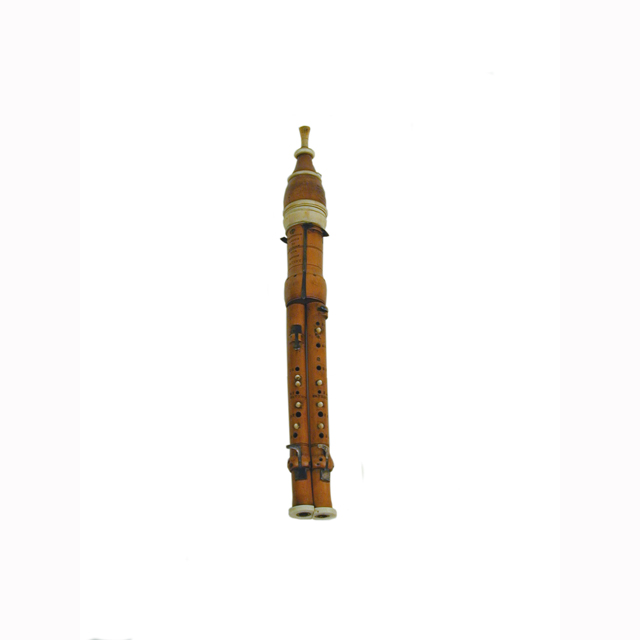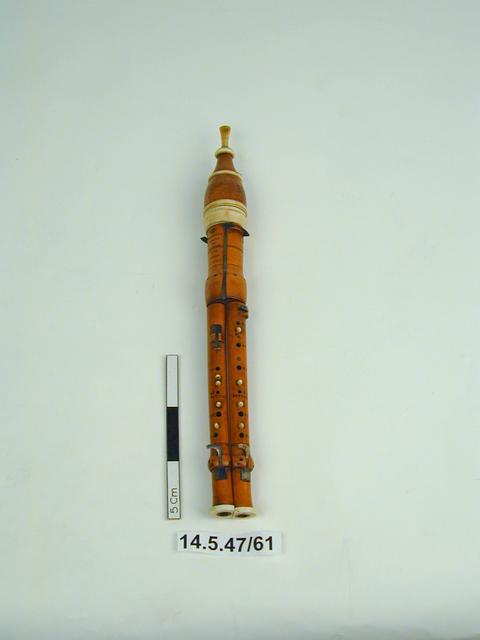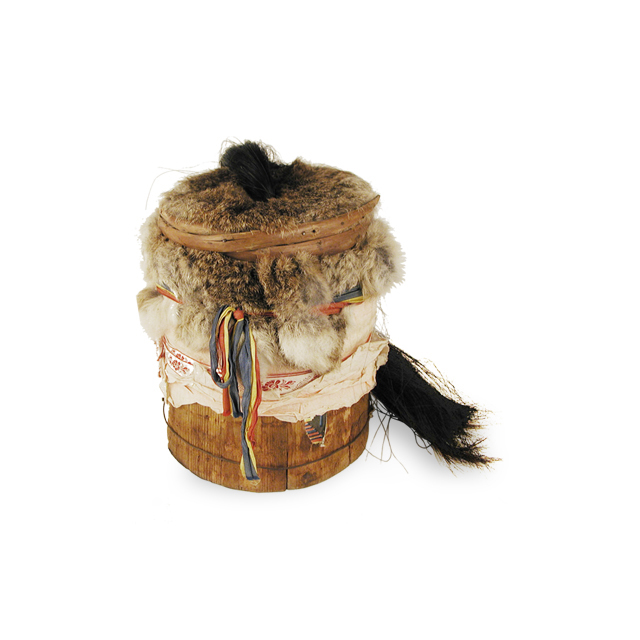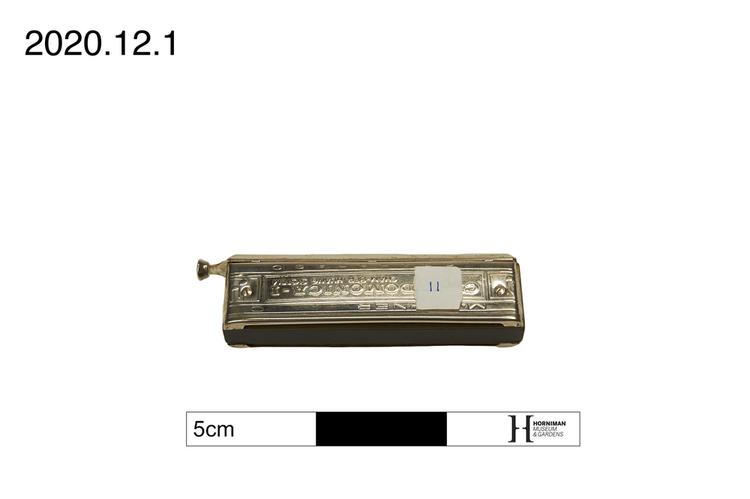

Double flageolet in D, boxwood, ivory mounts and finger guides. Equal tubes. Seven silver keys in all, mounted in turned blocks and rings. Some pinning about the level of the primary pivots of the wind-cutter keys. Two finger guides missing. Sounding length (lip to foot) is 27.0 cm. Stamped: 'Bainbridge & Wood 35 Holborn Hill, London' (Crown mark and Patent). On the socket is stamped: 'Bainbridge, Inventor'.
overall: 405 x 49 mm;
The flageolet is a duct flute with medieval origins. The English flageolet differs from the earlier French designs in the arrangement of the finger-holes. William Bainbridge was one of the most innovative makers of English flageolets and marketed the instrument to amateur performers. His flageolet had an ivory mouthpiece, a sponge chamber to capture moisture from the player's breath and ivory studs to guide the fingers to the holes. Bainbridge later developed the double flageolet (of which this is an example), upon which the two pipes are played simultaneously, sounding a third apart. So called 'wind-cutter' keys on the stock section allow the player to close off one or other of the pipes, with the left hand pipe designed to be used either on its own or in combination. The triple flageolet was also a Bainbridge invention, and the third pipe he added to this instrument provided a drone beneath the other two.






